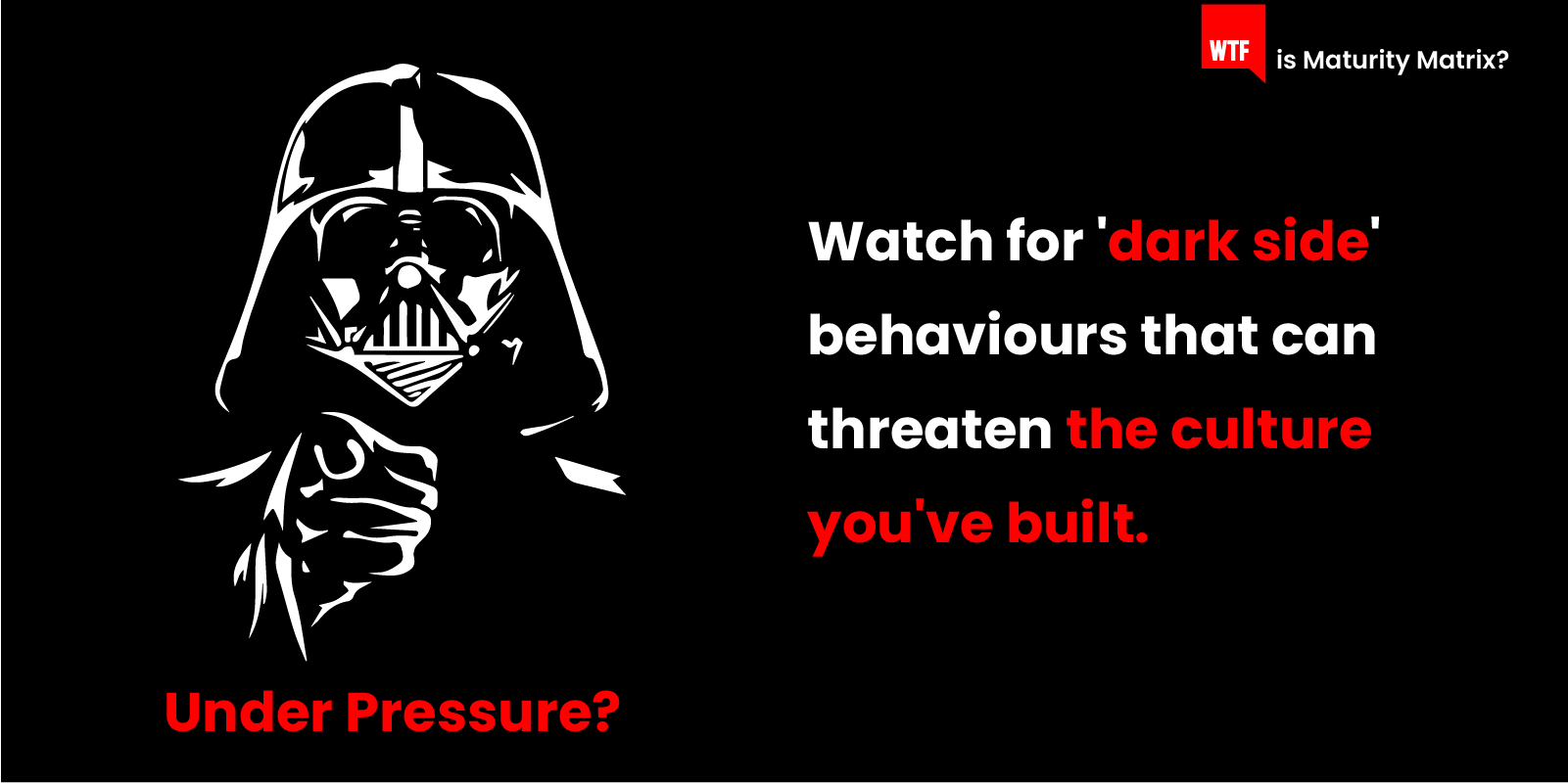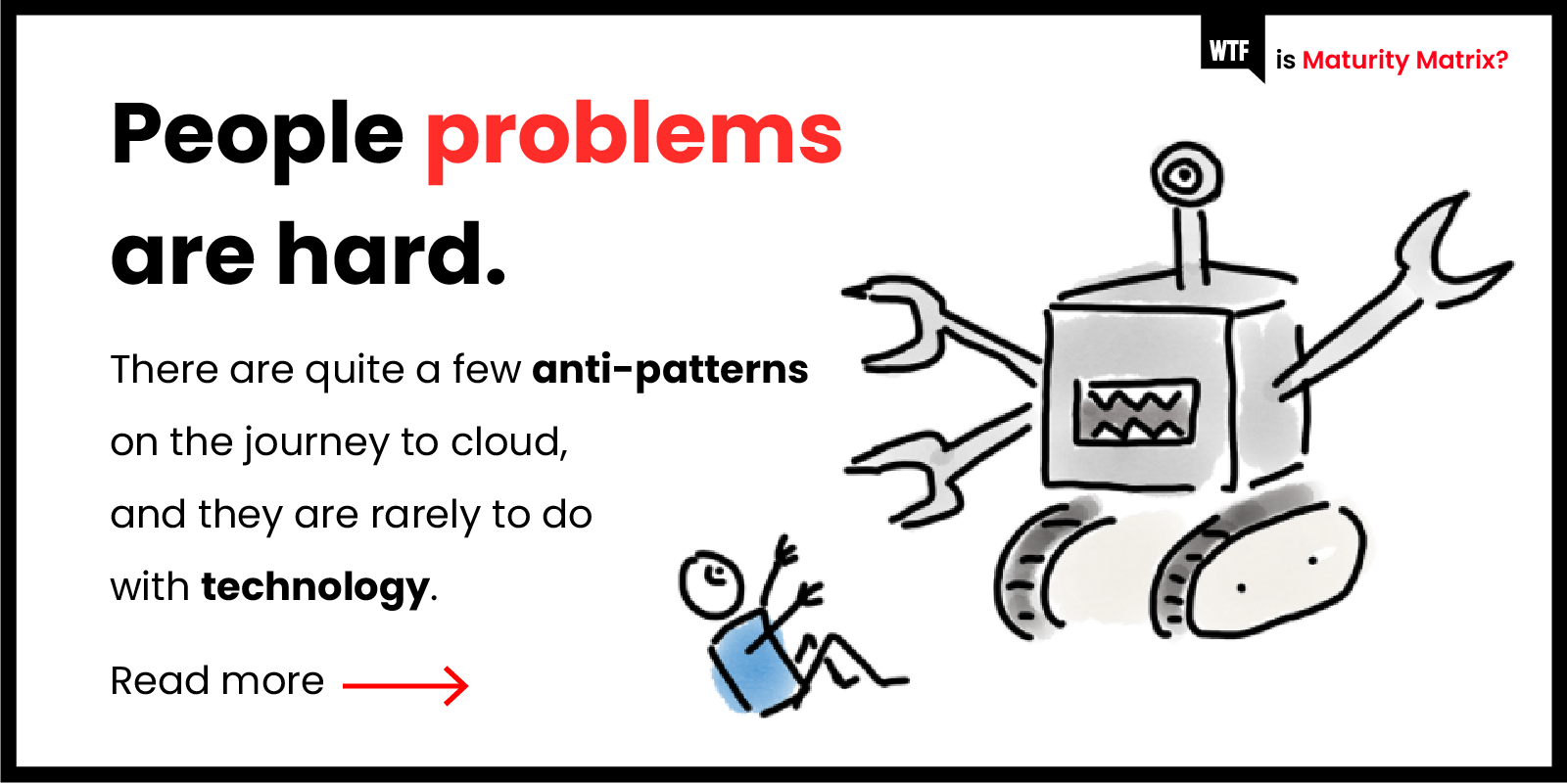A child stands in the middle of a group of friends, eyes closed and falls backwards. In this game, the child will know and trust that someone will catch her.
How simple life would be as an adult if we could rely on our potential falls being caught by those around us when losing our metaphorical ‘upright position’. I find this analogy useful to hold in my mind when considering the two psychological concepts which I will discuss in this blog; firstly that of psychological safety (for original research see Harvard Business School Professor Amy Edmondson’s 1999 study, Psychological Safety and Learning Behaviour in Work Teams) and secondly, the dark side (PDF) of personality as researched by the psychologist and talent-assessment researcher Robert Hogan.
When a leader is experiencing significant emotional upset, when they are stressed or ill, their shadow side can emerge. Hogan called this their 'dark-side’ behaviours, which can cause leadership to derail. In fact, as many as half of all leaders fail and derail, according to data analysis by Adrian Furnham, an organisational psychologist, in his book Backstabbers and Bullies (originally entitled Bullies and Bastards!).
In order to maintain a culture of psychological safety, it’s important to minimise leaders’ ‘dark-side’ tendencies to prevent erosion of the trust and freedom needed for innovation and productivity, especially in a Cloud Native organisation, where a collaborative culture is essential for success. In this blog post, we’ll suggest some tools for protecting your culture.
What 'Psychological Safety' Really Means
We talk a lot about psychological safety at Container Solutions but it is still a term that can be misunderstood to mean simply ‘being nice’ to one another, no matter what. It is true that to be ‘psychologically safe’ at work is to perform your job without fearing damage to self-image, status, or career.
However, and possibly the most important aspect of this concept, it is also about being safe to take interpersonal risks and knowing you will be accepted and respected for speaking out and speaking up. It is not about maintaining some type of perpetually cheerful veneer, irrespective of what is occurring around us.
To maintain a culture of psychological safety, all members of the organisation must firmly hold the belief that even in the most challenging of times, they can communicate difficult and uncomfortable feedback. They realise the value and importance of this to the wider goals of the organisation and do not see it as irrelevant or without impact. As Edmondson predicted, the usefulness of the psychological safety concept is more pertinent than ever. This was highlighted in her original research article in 1999:
‘With the promise of more uncertainty, more change, and less job security in future organizations, teams are in a position to provide an important source of psychological safety for individuals at work. The need to ask questions, seek help, and tolerate mistakes in the face of uncertainty, while team members and other colleagues watch, is probably more prevalent in companies today than in those in which earlier team studies were conducted. This may partially account for the empirical support I found for the role of psychological safety in promoting performance in these work teams; however, it also suggests that psychological safety and ways to promote it will be increasingly relevant for future research on work teams’.
When the Dark Side Emerges
Psychological research tells us that external factors leading to rapid change place enormous strain on decision makers which may, in turn, lead to significant and unexpected shifts in their behaviour. What is less well understood is what is happening to the decision maker’s inner experience, and consequently the potential impact on the psychologically safe culture.
What happens to the culture of psychological safety when leaders, who have previously been the champions of it, fall victim to the detrimental effects excessive pressure can inflict? When they are less focussed on their behaviour due to stress, anxiety, and upset, what are known as ‘dark-side behaviours’ may arise. When this is happening, those leaders ‘derail,’ and it becomes more difficult for them to maintain the well-managed self that they may have displayed during a hiring process or in the early stages of a new venture.
Hogan, an American organisational psychologist, has spent much of his lifetime examining derailing leaders through the lens of personality theory, researching how overused strengths manifest into dark-side behaviours. He succinctly defines these dark-side tendencies as follows:
‘The dark side describes people’s behavior when they are not paying attention and/or don’t care about creating a good impression; this happens when they are emotionally upset, when they are stressed or ill, when they are under the influence of chemical substances, or when they are simply being themselves. The dark side often emerges when individuals are dealing with someone whom they perceive as having a lesser status than they do—such as subordinate employees. The bright side represents maximal performance whereas the dark side represents typical performance. People move continuously and unconsciously back and forth between the two sides of personality. In essence, the bright side reflects faking and the dark side represents the real person’.
These ‘kept in check' aspects of personality act as strengths under typical circumstances, but when individuals aren’t self-monitoring, a shadow side appears and behaviours eventually become toxic. As observed by Hogan, this lack of monitoring occurs when the leader has stopped caring about how he may be perceived by others or his cognitive load is simply too great to be able to manage the impression he would normally like to give.
Other researchers have used the theatre metaphor to describe bright and dark tendencies, talking about front- and backstage behaviour. Manfred Kets De Vries, the psychoanalyst and management professor at INSEAD, talks frequently in his research about the ‘inner theatre’ of individuals. He notes that “to be effective, leaders need to pay attention to these unconscious dynamics that can have a serious effect on how they will function in their organisations”.
So what occurs when it is the brilliant and highly competent ‘high flyer', the ‘high-potential talent’ leader, who begins to fall prey to her dark-side tendencies? How does this manifest? Within this concept, her strengths have become overused and are now working against her. She has not developed other areas of herself and is now derailing and displaying the shadow side of her personality.
The derailing leader may become a stranger to herself when her ‘shadow side’ emerges, not fully aware of the toxic impact her derailed self is having on the various stakeholders within the organisation. The leader’s previous successes create a belief of infallibility, in which no one’s help or external feedback is required or needed.
Leaders who may have once been viewed as highly diligent become obsessed with detail and exhibit extreme perfectionism. Cautiously stable leaders may develop into completely avoidant, almost entirely invisible entities. Eccentrically colourful personalities may behave in extremely impulsive, erratic and irresponsible ways. The leader’s strengths now become their weakness and the question organisations need to consider is this: Will the dark side behaviours be acknowledged by followers, or will they go along with this new reality without feeling able to speak out? The answer to this question will undoubtedly influence the organisation’s ultimate success or failure.
'Bailed Out, Booted, or Busted'
In 2013, the Institute of Policy Studies examined the performance of 241 C-Suite leaders who ranked amongst America’s 25 highest paid CEOs in one or more of the previous 20 years. As the institute’s report points out, 40% of this group were eventually ‘bailed out, booted, or busted’. These poorly performing chief executives either wound up getting fired, had to pay massive settlements or fines related to fraud charges, or led firms that crashed or had to be bailed out during the 2008 financial crisis.
Alongside the devastating psychological cost to those around the derailing leader, the financial cost to these organisations was staggering. As the report notes, ‘despite their poor performance, the “booted” CEOs jumped out the escape hatch with golden parachutes valued at $48 million on average’.
Why and how do situations like this occur and what could be done differently? Hogan’s work provides us with a way of measuring an individual’s dark-side tendencies, detailing clear profiles and patterns and is aligned on psychoanalytic theorist Karen Horney’s original triad model, which I outline below.
The Derailing Leader
Hogan’s model is based on the assumption that, when we are experiencing anxiety and are under pressure,we tend to behave in one of three ways due to our personality and experiences in childhood. We may move toward people (compliance), against them (aggression) or away from them (withdrawal). Derailing behaviours can be conceptualised within these three areas.
A leader with a ‘moving toward people’ tendency may in typical times be viewed as a tolerant and detail-oriented individual. The individual will manage insecurities through building alliances. This need for personal achievement, affection, and approval is driven through conscientious behaviours. However, under extreme pressure and, if derailing, these strengths will move to unrealistic perfectionism and dogmatic inflexibility about rules and procedures. The leader could become reluctant to act at all or go against the popular view. At the extreme we may see avoidant, dependent, and/ or obsessive behaviour.
A leader with the ‘moving against people’ tendency may in typical times enjoy testing the limits, challenging the status quo, enjoying the glare of the spotlight whilst offering creative and highly original solutions to problems. Their need for recognition and positions of influence will drive them forward in the good times. However, when they’re derailing, we will start to see them express feelings of grandiosity, an over-valuation of their own capabilities. Manipulation and deceitfulness may become justified in their minds, and extremely dramatic and odd behaviours are observed by followers. They will manage feelings of self doubt by dominating and intimidating others.
At the extreme, we may see a pervasive pattern of instability in relationships, self-image, identity, and extreme impulsivity. A lack of empathy for others and bloated self-image may appear. Colleagues may see these leaders exhibit attention-seeking behaviours and excessive emotion.
A leader with ‘moving away from people’ tendencies may in typical times display a cautious approach to decision making. Feelings of inadequacy are managed by avoiding connection with others. He may have exacting standards, which drive forward his team and himself in the good times. However, when in the grip of derailing behaviours he will appear moody and very hard to please, distrustful of others, aloof and often detached, becoming irritated or argumentative with most of his followers’ requests. If this worsens, he may appear apathetic and restrict any emotional expression in relationships, becoming extremely uncomfortable with any social interaction.
So we can see a paradox, in that dark-side traits may have worked in a leader’s favour for many years prior to the derailment. Interestingly, they are often the leaders who have been promoted quickly. Only when they are truly under pressure does this shadow side fully appear.
It is for this reason that, over the last 12 months, organisations may have for the first time witnessed these behavioural shifts in their leaders. It is challenging when under strain to maintain the ‘bright side’ of ourselves. It is this overuse of their strengths, preventing the leader from confronting weaknesses or learning new skills, which can cause their ultimate leadership derailment.
What should leaders do to minimise the impact of dark-side tendencies?
As Furnham states, 'For fire you need heat, oxygen, and fuel; for derailment you need personal pathology, willing followers, and a poorly regulated and managed corporate culture'.
Personal Pathology
Within Container Solutions we are hopeful that our robust recruitment process has selected individuals whose profile suggests they respond well to self-development and have high self-awareness. However, we are still very aware of the psychological research that tells us 50% of new leaders fail after being hired. Armed with this knowledge, the psychologically safe culture we’ve built and raised awareness of our dark-side tendencies are vital.
We support employees and future leaders within Container Solutions through our detailed coaching programmes. This may often involve coaches asking individuals to consider the following questions:
- What should I stop doing? (What do I think and feel is not working for me and others? What is my team telling me?)
- What should I continue doing? (What do I think and feel is working well for me and others around me?)
- What should I start doing? (What would I like to be doing that I feel unable to do? What is my team telling me I should do more of? What areas of my personality do I underuse at work?)
These three key questions, asked across the course of coaching, hopefully require the individual to consider key aspects of their personality that they overuse and consequently, those that they ignore. We will often also use a 360-degree feedback approach to reach out to an individual’s teams to gather more data in order to answer these questions and address blindspots that the individual may have.
At Container Solutions we try to encourage new managers to make time for their own development. By reflecting on our own behaviours at work and not just those of others, by gathering data from our peers and managers, and completing reliable inventories of personality, leaders become accustomed to considering that optimal use of strengths is often better than maximal use. This allows leaders space to develop areas of themselves that they may find more difficult and uncomfortable.
We talk a lot in coaching about learning to feel more comfortable with the uncomfortable. This means learning to use parts of ourselves that feel less familiar but are important for us to develop in order to become a successful leader.
Willing Followers, Poorly Managed Culture
Let us end where we began. To be ‘psychologically safe’ at work is to carry out tasks without fearing damage to self-image, status, or career, and be safe to undertake interpersonal risks. If the organisation has processes in place that value self-reflection and honest feedback between team members, then it is likely that when the proverbial storm hits, individuals will already understand the types of derailing behaviours they are prone to.
In a truly psychological safe culture, the leader may have discussed this openly with her team and discussed what her shadow side may look like in terms of derailing behaviours. Some may even ask their colleagues to alert them if they see signs of this behaviour emerge, and team members will feel safe to do so even whilst in the eye of the storm. Group coaching may have occurred, in which discussions are also very carefully facilitated to support this type of necessary dialogue.
A truly psychologically safe culture will place significant importance on hiring processes, using only evidence-based methodologies. At Container Solutions, we use assessments which we know to be valid and reliable measures for predicting future behaviour. We are confident that individuals who find it difficult to self-reflect, have very low self-awareness or low trust in others are unlikely to be successful within our selection processes, often in spite of their technical skills.
Our hiring managers use this selection process to help mitigate any unconscious bias of their own and select people who will help us maintain our psychologically safe culture. Furthermore, no one individual will ever be solely responsible for making a hiring decision, to further mitigate personal bias.
Future leaders, such as our engineering managers, may have engaged in our Emerging Leadership Programme, undertaking training on such topics as ‘having courageous conversations’. They may also have engaged in extensive development coaching prior to even applying for a leadership role. By this point there is a raised awareness of themselves and others.
To be clear, any employee in Container Solutions can at any point request a series of coaching sessions in which self-reflection and feedback through various measures is discussed. This support is accessible to all members within the organisation, irrelevant of role or responsibility.
Conclusion
The damaging effects of the derailing leader can’t be overestimated. We all have a shadow side, but combine this with being in a position of influence and power, and lack of psychological safety amongst followers, and the outcome will be catastrophic in the difficult times.
By creating a culture in which all employees understand the value of difficult conversations, and in which openly admitting mistakes and accepting feedback is the norm, these effects are minimised and organisations remain resilient in the face of adversity. Engaging in regular conversations in which observations from trusted and emotionally intelligent team members can be discussed openly, alongside self-reflection, provides the foundations for collective support and ultimately psychological safety within the workplace.
Related Cloud Native Patterns
Learning Organisation
An organisation skilled at acquiring information, creating insight, and transferring knowledge can tolerate risk with confidence and solve difficult problems through experimentation and innovation.
Psychological Safety
When team members feel they can speak up, express concern, and make mistakes without facing punishment or ridicule, they can think freely and creatively, and are open to taking risks.
Productive Feedback
People are more engaged and creative when they feel comfortable receiving constructive information about their behaviour and giving the same in return.
Blameless Inquiry
When a problem occurs, focusing on the event instead of the people involved allows them to learn from mistakes without fear of punishment.
More Cloud Native patterns can be found here.




 Previous article
Previous article
